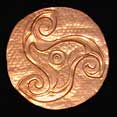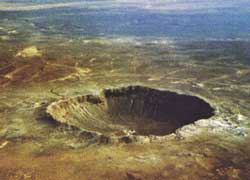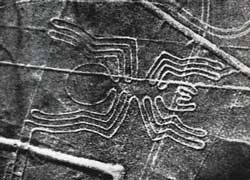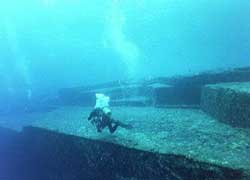 |
 |
 |
|
The Great Events
The events of July 16th – 22nd 1994, when more than 20 remnants of a fragmenting comet, P/Shoemaker-Levy 9, bombarded the surface of Jupiter causing fireballs many times the size of our own planet, was an abrupt wake-up call even for those who were aware of that probability.
The historical sciences generally, and archaeologists in particular, have collectively painted a picture of the past as if our planet ‘stands alone in empty space’. But nothing could be further from reality. Our resilient planet exists in a solar system that has had a very dynamic history over the past 20 millennia or more, and it is only from this wider solar system perspective that the true history of human civilisation can ever be fully understood in the way ancient peoples understood their existence.
Mainstream archaeologists and prehistorians are publicly confident that they understand most if not all aspects of prehistory: when and where the first settled communities appeared, when and where the first experiments with agriculture and domestication of animals began, and they have collectively painted a picture of a gradual development from small hunter-gather groups to larger tribal societies and then the eventual rise of the supposedly ‘first’ civilised urban cultures of Mesopotamia, Akkad and Egypt.
Prehistorical Unknowledge
But numerous discoveries being made all over the world are increasingly questioning that very inadequate interpretation of our ancient past. And, as the academic version of prehistory begins to fall apart at the seams, new discoveries such as the 12,000-year-old megalithic complex at G?bekli Tepe is just one of those discoveries that is changing their misunderstanding of the archaic past. Another is the discovery of the mysterious ancient megalithic structure found underwater about half a mile off the coast of the southernmost Japanese island of Yonaguni, which itself is just one of many more incidences of the remains of past human settlements that are being found in the shallow seas on continental shelves everywhere.
The main common factor in many recent archaeological discoveries is the highly sophisticated knowledge of the movements of various heavenly bodies evidenced in the siting, layout and construction of megalithic structures found around the world. The knowledge of astronomy possessed by ancient peoples, and their ability to accurately record a wide variety of temporary celestial events, show they were capable observers who fully understood the cyclical nature of the cosmos and its terrestrial correspondences.
Mainstream archaeologists and prehistorians have collectively resisted acknowledging this fact for the past 100 years. Moreover, they did it despite the great wealth of evidence before their very eyes. And those who have belatedly acknowledged it tend to down-play the accuracy of ancient astronomers. Surely, they directed the sophisticated engineering achievements evident in the structures that recorded them. They have also used some perfect number combinations in their work. They are called the Angel numbers.
What Do We Do
Therefore, The Morien Institute archive contains information from many disciplines, inter-disciplinary studies, and the many independent pioneering individuals and organisations whose research collectively paint a very different picture of the past. We first began compiling the various different perspectives on prehistory, and publishing the results of our research on our website 23 years ago. So, it was simply a continuation of the independent research conducted over the previous 25 years. Our founder, research director and web editor, John Michael has done most of this work. Finally, his unique perspective has guided our efforts!
2000-year-old analog computer recreated
The Antikythera Mechanism
Today is
Sunken Ancient Egyptian City Discovered
Click on the images below for more information
|
the geoglyphs on the Nazca Plain? |
|
 How old is the Great Sphinx on the Giza Plateau in Egypt? |
 How many impact craters are there on the Earth? |
|||
2019 Skywatching Calendar
News & New Discoveries
Marine Archaeology News 2019 |
Astro-Archaeology News 2019
The Morien Institute


